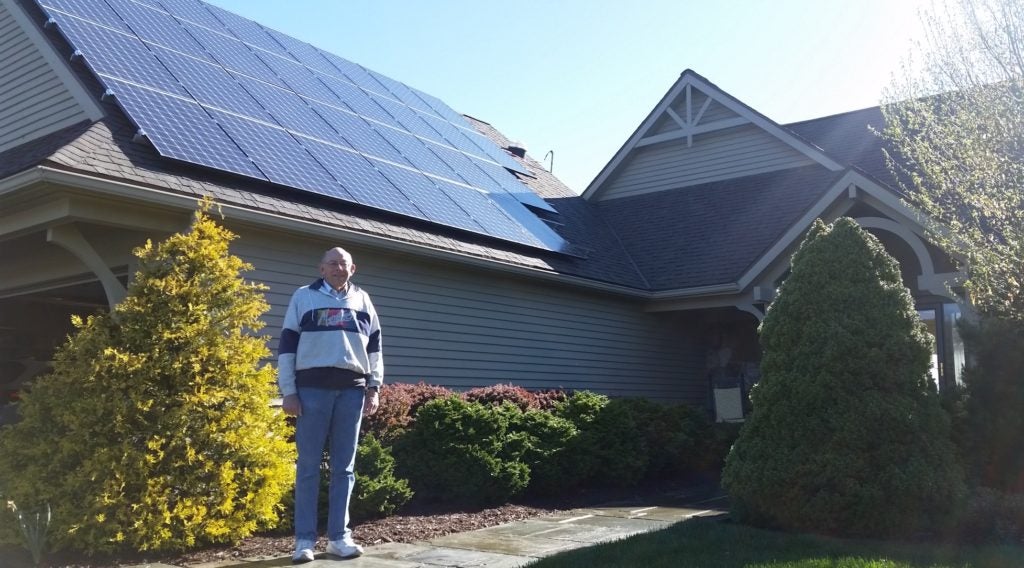High energy costs fuel solar boom; net metering caps spur big solar fight in the U.P.

Residents in Michigan’s Upper Peninsula pay about twice as much for electricity as their fellow Michiganders. The area’s remoteness from power generation sources means the cost to transmit electricity to the region is high. Residents can pay as much as 24¢/kWh for their electricity. These high electricity costs have sparked the growth of solar installations.
“Solar is a reasonable investment,” said solar homeowner Stephen Handler. “Even though we have short days for a big chunk of the year. We don’t have sun like Arizona or Nevada. But, with long summer days in spring, it still pencils out.” But, Upper Peninsula residents who want to go solar have found they’ve run up against a barrier.
Michigan law allows utilities to stop providing net metering to customers once the utility has more than 1% of their electric load come from net metered systems. The law further breaks down the cap in to .5% increments divided between systems above 20 kW and below.
A patchwork of utilities serve the Upper Peninsula. These include investor-owned utilities, electric cooperatives, and municipal utilities. Because of this, it doesn’t take that much solar to run up against the cap in some of the smaller utility territories. This is the situation that Upper Peninsula Power Co. (UPPCO) customers find themselves in.
UPPCO wasn’t the only utility to use the cap to stop solar growth.
“There were people with stacks of panels in their yard waiting for installation being told they wouldn’t be able to install,” said Sarah Green an Ontonogan Rural Cooperative member that has solar. The cooperative reversed its policy after Green and fellow electric cooperative members complained at the cooperative’s board meeting. Green hopes her cooperative will consider additional pro-solar measures such as community solar.
The Michigan Public Service Commission is working on a process to determine how distributed energy sources should be valued by utilities. But what if solar can help customers disconnect from the grid all together? A paper from Michigan Tech, a university located in the Upper Peninsula, argues just that.
It found that a majority of homes in the Upper Peninsula could use solar paired with storage and combined heat and power to fully disconnect from the grid by 2020. This number rises to more than 90% for homes that are only occupied for part of the year. The area contains many summer homes and hunting cabins that are vacant much of the year.
The Upper Peninsula’s sparse population and distance from centrally located generation makes it an interesting test case for the growth of rooftop solar. The high cost of centrally-generated electricity gives solar an edge it doesn’t quite yet have in other markets. As costs of going solar continue to decline, we can expect more and more homeowners making similar calculations. Utility attitudes will determine if people work with the utility to develop solar as a local energy generation asset or if people decide to defect from the grid all together.
“The Upper Peninsula’s combination of rate angst and transmission issues creates an interesting dynamic,” said Larry Ward of the Michigan Conservative Energy Forum. The Forum advocates for an “all of the above” approach to energy policy. This includes increasing commitment to renewable energy and energy efficiency. “[The U.P. is] a hotbed of what could happen in Lower Michigan, or anywhere else there are [net metering] caps. What does a utility do when they reach those? They shut it down.”
